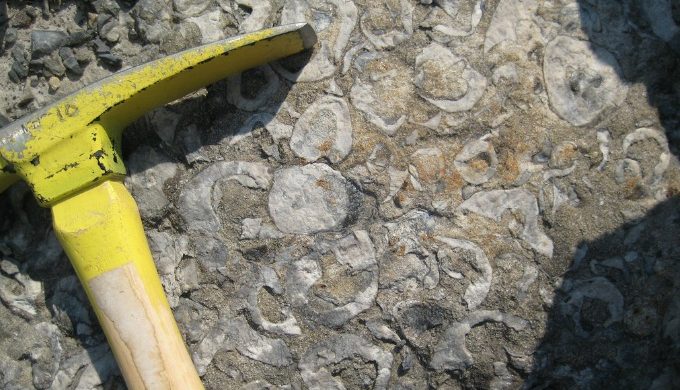Mineral Wells Fossil Park, located in Mineral Wells, Texas (west of Fort Worth) is a very unique park. The Mineral Wells Fossil Park allows fossil enthusiasts, paleontologists and students an excellent opportunity to see and collect well preserved “Pennsylvanian Period” fossils with ease and abundance. These fossils have been dated to be just over 300 million years old. The beauty of the Mineral Wells Fossil Park is that admission is free and visitors can take home whatever they find.
Things to Do
Mineral Wells Fossil Park Allows You To Dig For Your Own Fossils AND Take Them Home
Visitors Can Find Crinoids, Echinoids and Brachiopods (among others)

Photo: Flickr/Penny Higgins
The park as it exists today is a result of 20 years of erosion of the old City of Mineral Wells landfill’s borrow pit, which was closed in the early 1990s. The erosion of the borrow pit has revealed fossils documenting ancient sea species of crinoids (sea lilies), echinoids (urchins), brachiopods, pelecypods (clams and oysters), bryozoans, corals, trilobites (arthropods), plants and even primitive sharks.
In recent years, the borrow pit has become a mecca for the avid fossil hunter, the amateur and professional paleontologist, and various fossil, paleontological, gem and mineral groups and societies in Texas and the surrounding states.
Come Prepared For The Elements

Photo: Flickr/Makuahine Pa’i Ki’i
This is a fairly primitive site, so be sure to bring a lot of water with you. During the hot summer months visiting in the early morning and evenings is highly recommended. There is a new shade structure, but it is still a good idea to bring an umbrella with you for shade while digging. The park has primitive restrooms and no running water. Park officials also recommend that you bring small zip bags or nail aprons for small finds and to keeping things organized. Knee pads or patches are also recommended for crawling around.
Tons of Interesting Fossils To Discover

Photo: Flickr/James St. John
The most common fossil found at Mineral Wells Fossil Park are the stalks of crinoids (sea lilies). While crinoids may look like weird plants, they are actually animals. There are likely dozens of species found here, each with their own design and ornamentation. Some even have spikes.
To learn more about the Mineral Wells Fossil Park and to plan your visit, check out their website for more information and directions to the park.


